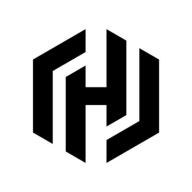

HashiCorp Nomad and Microsoft Defender for Cloud compete in IT infrastructure management. Microsoft Defender for Cloud holds an upper hand in security features and integration within Microsoft's ecosystem.
Features: HashiCorp Nomad is recognized for flexibility, ease of use, and multi-region deployment capabilities. It shines in orchestrating containerized applications efficiently. Microsoft Defender for Cloud provides robust threat detection, integrated compliance management, and enhanced security alerts, offering a more comprehensive security management solution.
Ease of Deployment and Customer Service: HashiCorp Nomad offers customizable deployment for diverse environments, supported by community documentation. Microsoft Defender for Cloud integrates seamlessly with Microsoft services, ensuring a cohesive experience within Azure and benefits from well-established support channels.
Pricing and ROI: HashiCorp Nomad's cost-effectiveness offers a favorable ROI over time, especially beneficial for smaller setups. Microsoft Defender for Cloud may have higher initial costs but provides superior security and long-term value in cloud protection.


HashiCorp was founded by Mitchell Hashimoto and Armon Dadgar in 2012 with the goal of revolutionizing datacenter management: application development, delivery, and maintenance.
The datacenter of today is very different than the datacenter of yesterday, and we think the datacenter of tomorrow is just around the corner. We're writing software to take you all the way from yesterday to today, and then safely to tomorrow and beyond.
Physical, virtual, containers. Private cloud, public cloud, hybrid cloud. IaaS, PaaS, SaaS. Windows, Linux, Mac. These are just some of the choices faced when architecting a datacenter of today. And the choice is not one or the other; instead, it is often a combination of many of these.
HashiCorp builds tools to ease these decisions by presenting solutions that span the gaps. Our tools manage both physical machines and virtual machines, Windows, and Linux, SaaS and IaaS, etc. And we're committed to supporting next-generation technologies, as well.
HashiCorp was founded and continues to be run by the primary authors of all our core technologies powering thousands of companies worldwide. We speak at conferences and write books related to application and infrastructure management.
All our foundational technologies are open source and developed openly, and have been since 2010.
The Tao of HashiCorp is the foundation that guides our vision, roadmap, and product design. As you evaluate using or contributing to HashiCorp's products, it may be valuable to understand the motivations and intentions for our work.
Microsoft Defender for Cloud is a comprehensive security solution that provides advanced threat protection for cloud workloads. It offers real-time visibility into the security posture of cloud environments, enabling organizations to quickly identify and respond to potential threats. With its advanced machine learning capabilities, Microsoft Defender for Cloud can detect and block sophisticated attacks, including zero-day exploits and fileless malware.
The solution also provides automated remediation capabilities, allowing security teams to quickly and easily respond to security incidents. With Microsoft Defender for Cloud, organizations can ensure the security and compliance of their cloud workloads, while reducing the burden on their security teams.
We monitor all Container Management reviews to prevent fraudulent reviews and keep review quality high. We do not post reviews by company employees or direct competitors. We validate each review for authenticity via cross-reference with LinkedIn, and personal follow-up with the reviewer when necessary.